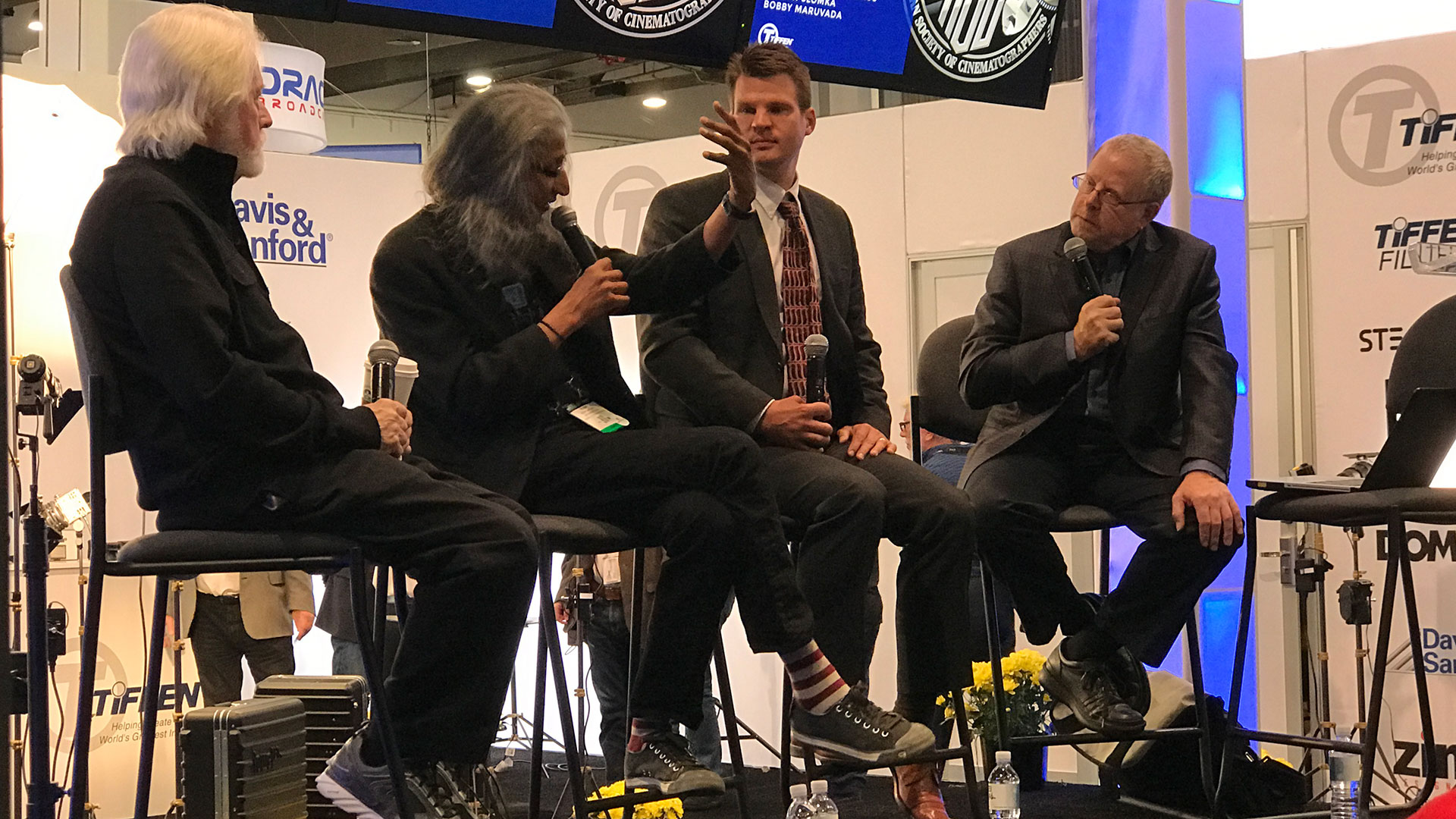Cinematographers on an ASC panel held earlier today at the Tiffen booth on the NAB show floor weren’t mincing words — in an HDR world, they said, SDR can’t die out soon enough.
“I’m a firm believer that when you shoot for HDR, you shoot for HDR,” said Curtis Clark, ASC, setting the tone for a discussion that considered the creative implications of grading and displaying images in HDR, especially while SDR is still on the scene.
DIT and colorist Bobby Maruvada backed him up, insisting, “You’ve got to forget about the SDR deliverable.” He expanded on the thought later in the discussion, explaining that he feels it’s important that HDR gain momentum. If that means SDR versions of HDR masters suffer in the translation, so be it.
“I want HDR as a new palette for cinematographers to tell stories,” he said. “But the consumer has to drive it.” In order to spur sales of HDR TVs, Maruvada reasoned, “I actually want the SDR version to not look as good as the HDR version.”
And Clark recommended that the exhibition side of the industry step up its game when it comes to HDR projection, saying that once consumers get used to watching bright HDR content on large home screens, they may start to find the cinema offers a less immersive experience. “That’s not a good thing for cinema,” he said, but acknowledged Dolby Vision’s work to bring HDR to movie screens.
Maruvada described some of the particular challenges cinematographers face on set, recalling a recent shoot where a pair of actors, one blond and one African-American, sat in front of a picture window through which was visible the brightly lit surroundings outside. Normally, he said, the cinematographer would put ND filtering in front of the window in order to properly light the actors. But in HDR, he said, the world outside the window was clearly visible and the actors were both adequately lit. It could pose a new challenge for visual storytelling.
“How are we going to shape this [image]?” he asked. “That became a whole new game in terms of lighting.” He said production designers have to pay attention, too, as it’s harder to hide things in the shadows of a higher dynamic range image. “There is shadow detail that you are now going to see, and there are things that were buried in the blacks that are now coming up — and sometimes biting us on the ass.”
The biggest disagreement among the panelists may have been on the question of whether an HDR monitor is an absolute requirement on set. Clark and Maruvada said HDR monitoring is necessary, but FotoKem color scientist Joseph Slomka disagreed to a degree, saying a skilled cinematographer can properly envision the HDR look without bringing an HDR monitor on set.
“HDR monitoring is vastly expensive, even for tentpole features,” Slomka said. He recalled a recent project that wasn’t given an HDR monitor, but instead was allowed four full-crew lighting days with a camera and a DIT to develop an HDR look using an SDR monitor for reference, using scopes to verify critical qualities of the image.
The panel’s moderator, Mark Weingartner, ASC, fired back: “Does the make-up artist know how to work a scope?”
And Clark, who said he recently shot a short film for Netflix using Sony’s BVM-X300 for color monitoring, said, “Sounds to me like it would have been cheaper to have an HDR monitor on set.” With that HDR display in place, Clark continued, “there is confidence you know what you’ve got. Everyone wants to see exactly what it’s going to look like.”
Another issue, of course, is the existence of HDR and SDR versions of a film side by side during post-production. Many DPs will remember the sinking feeling they got back in the day, when they realized that the director had gotten used to ungraded images they saw in editorial, and objected when the proper color timing changed the image later in the process. That means it might be a good idea to grade your HDR version first if that’s your primary deliverable, or even try to get editorial working on HDR displays, so that directors and producers don’t grow fond of the SDR version.
“Don’t take me back to the days when we edited off the video tap,” Maruvada said. “I have a real problem with people geting demo love from something that’s not real.”
Then again, Weingartner noted, doing the HDR version first can make the SDR version seem overly drab. And the panel noted that, aside from the high cost of HDR displays, there is a real issue with fatigue when an editor or colorist is staring at a 1,000-nit or brighter screen all day long.
Slomka said it’s important for DPs to understand the characteristics of SDR and HDR displays so they can be mindful of what they’re trying to achieve as they shoot. “Be aware of what you’re creating so you don’t get disappointment or surprise,” he said. “If it’s wrong in HDR, it’s wrong in SDR.”
